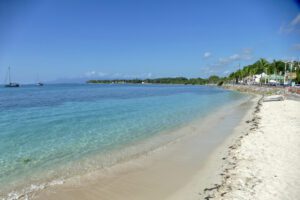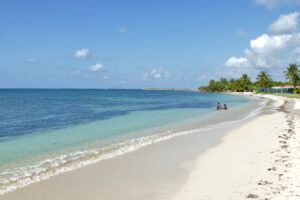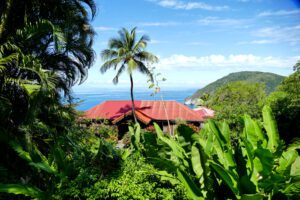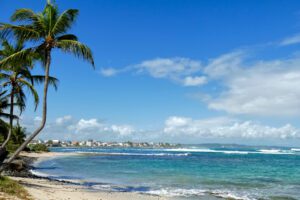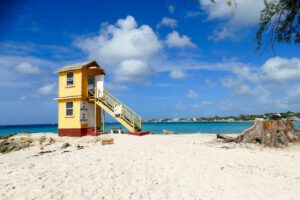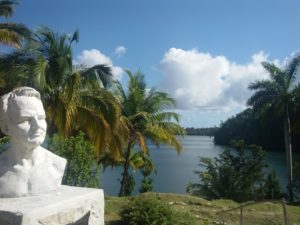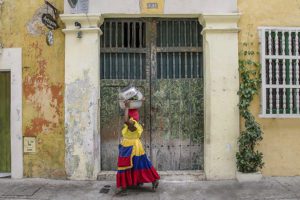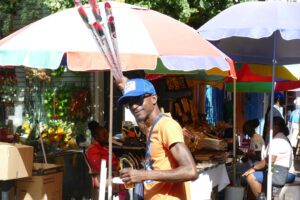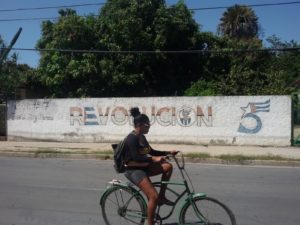Its unique shape of a delicate butterfly makes Guadeloupe one of the most beautiful and outstanding islands in the Caribbean. But the fact that Guadeloupe consists of two separate wings is not only charming. These two parts, which are only separated by a narrow strait, are also geologically very different.
In this post, I put together itineraries including all the information and tips that will help you plan your own trip to Guadeloupe. Especially if you prefer to explore this tropical paradise by public bus.

On the one hand, there is the eastern part of Grande Terre, which is best known for its flat and pleasing terrain. To the west lies Basse Terre, the larger of the two wings. Its center is characterized by untamed and mountainous wilderness.
Oh yes, Guadeloupe has many sides’n’sites worth discovering, and I’m taking pleasure in introducing them all in my posts.
Guadeloupe, a French Département
Guadeloupe– an overseas department in the Caribbean that is actually part of the French state and therefore politically a part of Europe?
Are you sure? Because that sounds crazy!
How is that possible?
Well, to answer this truly great question, we have to go back in time a bit. To be precise, more than 500 years back, the hyperactive Christopher Columbus was the first European to reach the island. This was during his second journey in 1493. He named it Guadalupe after a Spanish pilgrimage site.
Anyway, at that time, the Carbis living on the island managed to successfully repel the Spanish.
In 1635, however, happy days were definitely over as the French colonized Guadeloupe. In 1664, the island was transferred to the French West India Company. After its dissolution, the French crown took over the administration of the colony in 1674.

The French established sugar cane and coffee plantations. Since the colonialists quickly banished the unruly Caribs to the neighboring island of Dominica, they needed other cheap fieldhands. Therefore, Africants were kidnapped and taken to Guadeloupe as slaves, as well as other places in the so-called New World, obviously. Statistically, a slave on a plantation survived seven years. Women often became infertile, and many infants died. Hence, more and more people had to be brought in from Africa. Eventually, they made up the majority of the colony’s population.
On the Shuffleboard of Foreign Powers
As a result of the French Revolution of 1789, slavery was abolished in the French colonies in 1794. Great Britain took advantage of the unstable situation and occupied the islands. Fearing the abolition of slavery, the plantation owners supported the British invasion. Yet, the French were able to drive out the British just a few months later. In June of 1794, nine ships carried more than 1,000 revolutionaries from France to Guadeloupe. One of them was the former merchant Victor Hugues. In his luggage was an unusual item that would never be allowed in your carry-on: Hugues brought a mobile guillotine to the island! It was set up on the Place de la Victoire where then, the colonial plantation owners and slave masters were beheaded.
None other than Napoléon Bonaparte reintroduced slavery in the French colonies in 1802. Under the leadership of two local resistance fighters, Louis Delgrès and Joseph Ignace, the locals opposed Napoléon’s troops. Yet, they lost their lives in the fight for freedom.

However, the restored system of slavery became increasingly unstable. More and more slaves fled into the forests, and there were repeated uprisings. Also, human rights activists like Victor Schœlcher campaigned for the abolition of slavery. In 1848, slavery was finally abolished in all French territories by decree.
The Problem with Schœlcher
There is hardly a square or a park without a statue of Victor Schœlcher. No town without a boulevard and a school bearing his name exists. He was a French politician and opponent of slavery in the colonies. But in all honesty, they overdo it a little bit with good old Schœlcher.

You can’t make that up.
Without wanting to deny his merits, I do understand why locals see the cultish obsession with Victor Schœlcher with skepticism or even anger. After all, it insinuates that the brave white intellectual had to come to free the thick, obedient Africans from slavery. Also, many locals see Schœlcher as a token and alleged proof that not all white people were greedy racists.
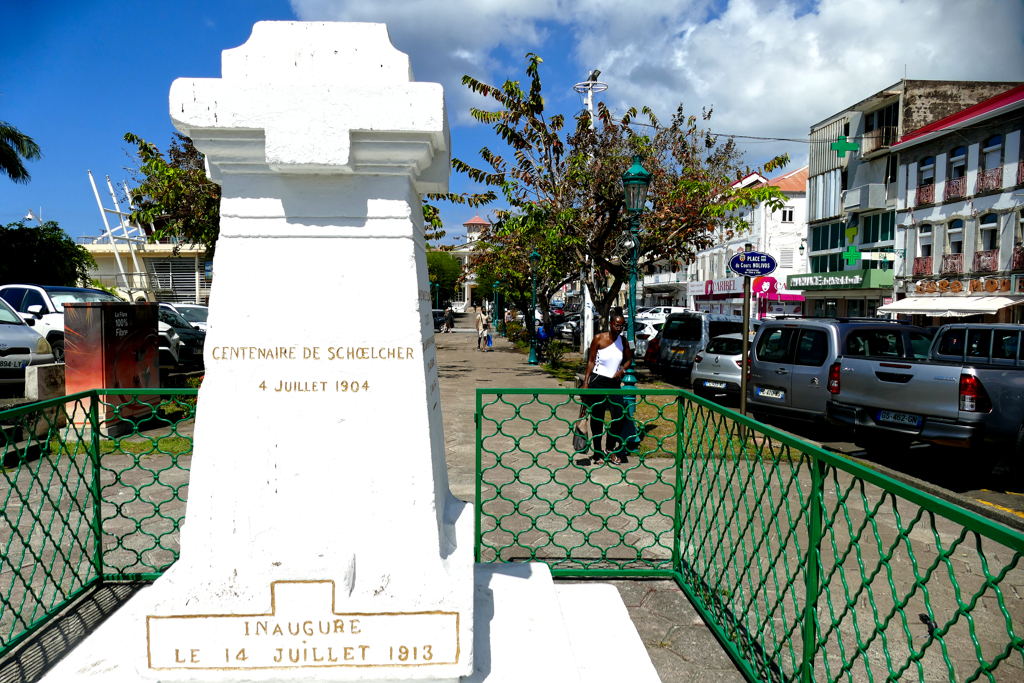
Hence, it’s understandable that locals want to knock this alibi off its pedestal. And some actually do it: In recent years, protesters destroyed Schœlcher’s statue in various spots around the island. They demand taking the merits of the black leaders of slave revolts into focus as they actually risked and even lost their lives in the attempts to free their people.
After Emancipation
Many former slaves were no longer willing to work on the plantations. In order to be able to maintain operations, free contract workers were recruited, especially in India, and brought to Guadeloupe. The plantation owner paid for the passage, and the contract workers then had to work off the costs on his plantation. I think it’s called serfdom. Anyway, if all went well, they were then free to return or stay in Guadeloupe. In total, over 40,000 Indians came to Guadeloupe in the 19th century. Sadly, over 10,000 of them died due to the difficult living and working conditions. Although they were granted some political rights in 1904, it was not until 1923 that Guadeloupeans of Indian descent received citizenship and the right to vote.

In 1928, Cyclone Okeechobee caused devastating destruction on the island. In addition to material damage, also 1,200 people died in its aftermath. The islands of Martinique, Montserrat, and Nevis also reported damage and fatalities, although this was nowhere near the extent of the damage in Guadeloupe.
Guadeloupe ceased to be a colony and became an overseas department of France in 1946. If you ask me, it’s just a marginal distinction and rather semantics. However, officially it is now one of 101 Départments and is therefore an integral part of the mother country in all aspects. Obviously, the Guadeloupeans are French citizens.
As a fully integrated part of France, the island is also part of the European Union, although not the Schengen area. Geographically, it forms the French Antilles together with Martinique, Saint Barthélemy, and Saint Martin.
Two Very Different Wings of the Same Butterfly
So now you know how it can be that Guadeloupe is part of the European continent, which is around 7,000 kilometers away.
To be precise, Guadeloupe is not an island but an archipelago consisting of the six main islands of Basse Terre, Grande Terre, Marie Galante, La Désirade, and Les Saintes including the islands of Terre-de-Haut and Terre-de-Bas. There are also many uninhabited islets, such as those that make up the Petite Terre archipelago.
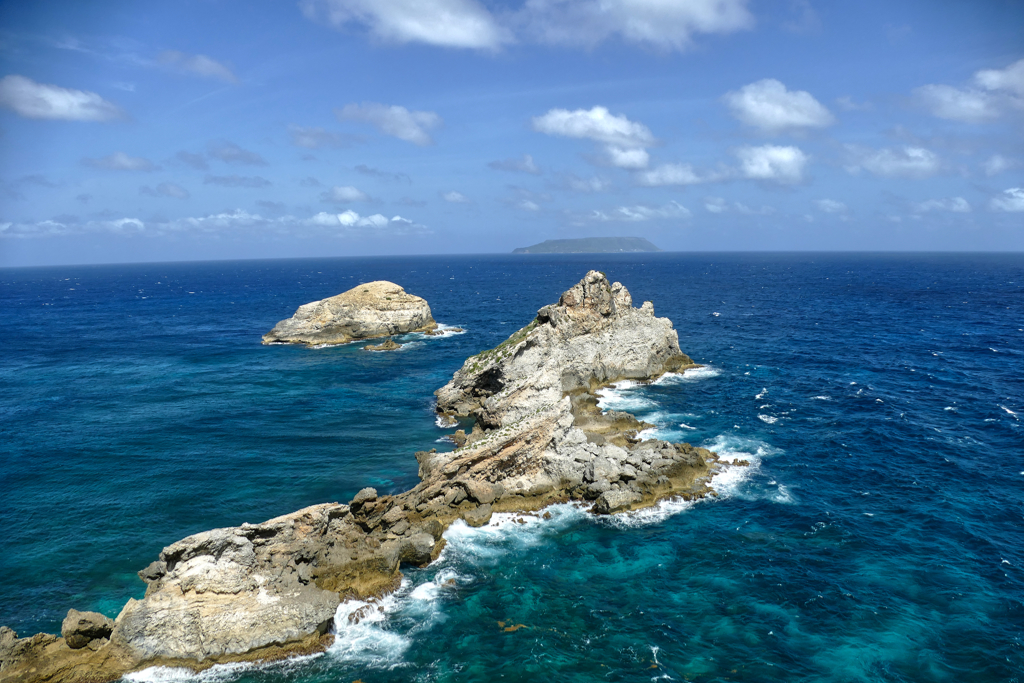
The two main islands Grand Terre and Basse Terre are connected around the main city Pointe-à-Pitre and spread their wings in the Caribbean Sea like a beautiful butterfly. Other than that, they are separated from each other by the narrow Rivière Salée strait. At its narrowest point, the waterway is actually only about 50 meters wide.
These two parts are so different that it is hard to believe that they are in fact the same piece of land. While the western part that goes by the name of Basse Terre is mountainous, overgrown, and rough, the eastern wing called Grand Terre attracts visitors with gently rolling hills, settlements steeped in history, colonial architecture, and, above all, countless dreamy bays lined with sea grape and coconut palms.
Grande Terre – the Large Land
Despite its name which translates to Large Land, Grande Terre is actually smaller than Basse Terre, however, it is slightly more populated by five percent.
Instead of Basse Terre’s high densely overgrown mountains and dramatic gorges, rolling hills, picturesque cliffs, and most importantly, dreamy white sand beaches define the appearance of Grand Terre. Actually, the island is a limestone plateau, surrounded by coral reefs. Also, Grande Terre has a much drier climate than Basse Terre. You’ll immediately notice that the vegetation here is not as dense and also much flatter.

All this is probably the reason for Grand Terre being far more touristy. While many parts of its coast are still dotted with towns and fishing villages, vast areas are gradually being transformed into seaside resorts including big hotel complexes with adjacent golf courses and casinos, mainly around the town of Le Gosier and in the hotel zone between Sainte Anne and Saint François.
Basse Terre – the Lush Lowland
Basse Terre forms more than half of the archipelago’s entire land surface. And although Grand Terre, which translates to the Large Land, seems to be the more influential part, it’s actually its untamed big sister formed around the volcano La Grande Soufrière that earns Guadeloupe the greatest merits.

Not only is the volcano the highest mountain peak in the Lesser Antilles and one of nine active volcanoes in this region. The so-called Parc National de la Guadeloupe around its crater is the largest national park in the entire Caribbean. It was officially founded in 1989 and covers an area of around 17,300 hectares. That’s around ten percent of the entire archipelago!
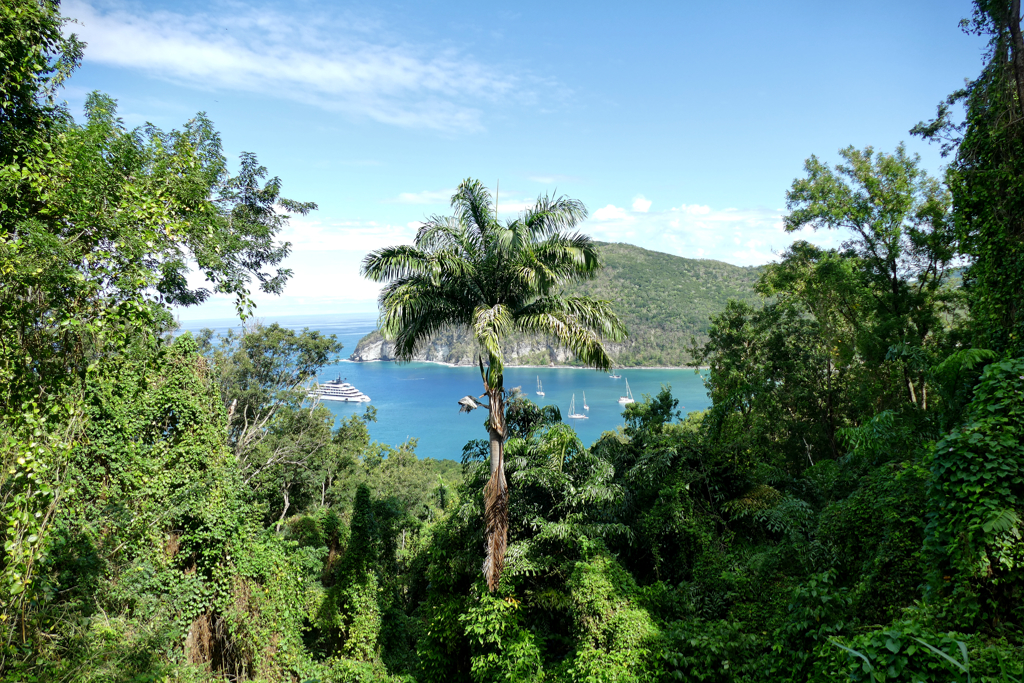
In 1993, UNESCO added the Guadeloupe Archipelago to the world’s biosphere reserves list. The islands provide a habitat for more than 300 species of trees, 270 ferns, and 100 kinds of orchids. 38 species of birds are flying around and 17 species of mammals are frolicking in the undergrowth.
Exploring Guadeloupe by Public Bus
When planning my trip to Guadeloupe, I was told public transport is not comprehensive and not reliable. I would definitely need a car to be able to enjoy the island to its full extent. Well, I don’t know exactly what the full extent is supposed to be. However, after almost two weeks on the island, I can say that I got everywhere I wanted to go by local bus.
I can imagine that you absolutely need your own vehicle to get into the depths of the rainforests in Basse-Terre’s hinterland. But I didn’t really want to go there.
For my part, I was able to do everything I wanted to do, even though I travelled exclusively by public transportation.
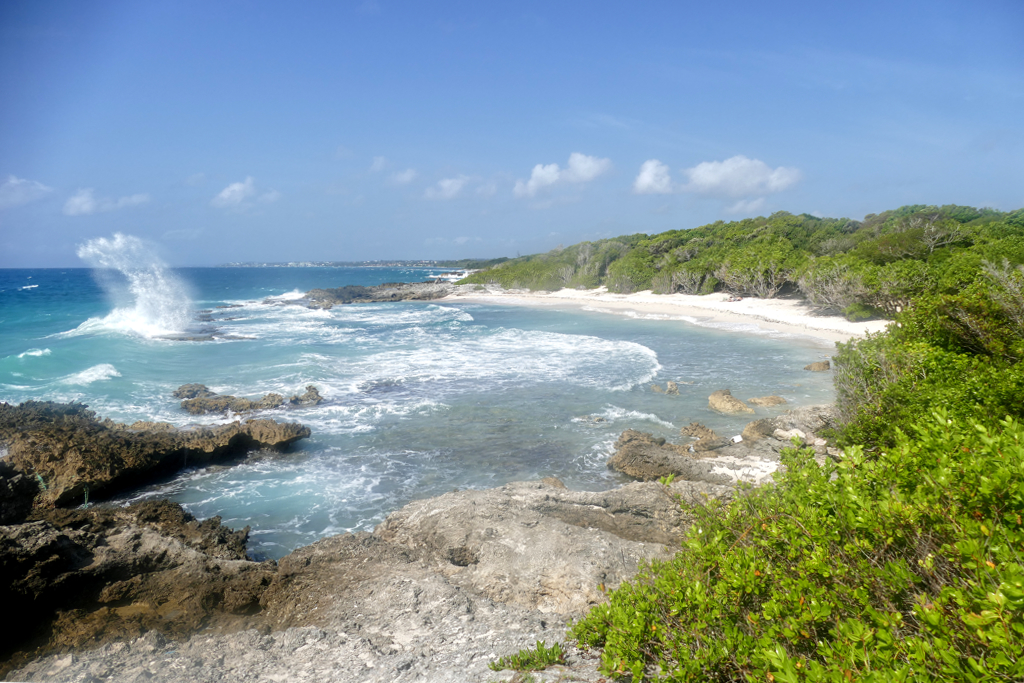
Based on my two weeks on the island, I put together itineraries for one and two weeks that you can easily adapt to your trip. All these day trips can be taken from a single location. However, I purposely arranged the order of the tours so that the first half is in Grand Terre and the second half in Basse Terre. This way you can decide whether you actually just want to stay in one location or whether you look for accommodation in Grand Terre for the first half and in Basse Terre for the second half. FYI: I stayed in Grand Terre’s city of Sainte Anne the entire time and therefore often had connections at the bus terminals of Pointe-à-Pitre.
That was okay, but I might choose accommodations in two different locations on my next trip.
Note that you’ll find detailed descriptions and information about the individual places listed below in the respective travel guides to Grande Terre, Basse Terre, and the offshore island of Marie Galante. These travel guides are linked below the itineraries. Also, you’ll find the spots listed in the itineraries marked in the map below.
Perfect Itinerary for One Week
- Spend your first day relaxing on a nearby beach. In the afternoon, go explore your neighborhood.
- Go on a day trip to the beaches east of Saint François. Take Karu’lis bus #SF1 from the Gare de Routière to La Douche, walk from there to Anse à la Gourde where you spend some time on the beach before you continue by one of the next coaches all the way to Pointe des Chateaux.
- Take bus #102 from Pointe-à-Pitre to Petit Canal where you visit the memorials. Continue then by one of the next coaches to the charming town of Port Louis where you relax on the Plage du Souffleur.
- Today it’s time for a city break in Pointe-à-Pitre where you visit the Mémorial ACTe and join a street art tour organized by Pousse Pousse.
- During the second half of your stay, you will explore Basse Terre. Visit Deshaies, which gained international fame through the series Death in Paradise. Don’t miss out on the magnificent Botanic Garden. Then, relax on the Plage de Grande Anse.
- Today, you visit the town of Basse Terre where you can also do some souvenir shopping at one of the island’s most popular markets.
- Yes, it’s your last day which you might want to spend on a beach in your vicinity.
Perfect Itinerary for Two Weeks
- Spend your first day relaxing on a nearby beach. In the afternoon, go explore your neighborhood.
- Go on a day trip to the beaches east of Saint François. Take Karu’lis bus #SF1 from the Gare de Routière to La Douche, walk from there to Anse à la Gourde where you spend some time on the beach before you continue by one of the next coaches all the way to Pointe des Chateaux.
- Take bus #102 from Pointe-à-Pitre to Petit Canal where you visit the memorials. Continue then by one of the next coaches to the charming town of Port Louis where you relax on the Plage du Souffleur.
- Go on a circle trip by bus #SA3 from the town hall in Sainte Anne to Le Moule. After exploring the town and an extensive visit to the beach, take bus #111 at the L’Autre Bord stop. In only twenty minutes, the bus will take you to Saint François where you can enjoy the rest of the day on the Plage des Raisins Clairs. From there, you return by any of the buses to Sainte Anne.
- Another beach day lies ahead, today in Le Gosier, probably Guadeloupe’s most-developed tourist area. Enjoy the Plage de la Datcha and go on a quick boat ride to Îlet du Gosier just one kilometer off the coast. If you have itchy feet, why not continue to the historic landmark Fort Fleur d’Épée? From there you’ll have a mindblowing view of the entire coast.
- Make sure to visit also one of the smaller islands like for instance Marie Galante. The easiest way is on an organized trip.
- Today it’s time for a city break in Pointe-à-Pitre where you visit the Mémorial ACTe and join a street art tour organized by Pousse Pousse.
- During the second half of your stay, you will explore Basse Terre. Visit Deshaies, which gained international fame through the series Death in Paradise. Don’t miss out on the magnificent Botanic Garden. Then, relax on the Plage de Grande Anse.
- Yesterday’s visit to the beach was just a foretaste of the fantastic northwest coast of Basse Terre. Here, incredible beaches line up like beads on a string. One of the most beautiful is actually called Plage de la Perle! From there you can take one of the next buses to Plage de Cluny and Plage des Amandiers.
- Pay the town of Basse Terre a visit. This is also a great opportunity for some souvenir shopping at one of the island’s most popular markets.
- Get a sense of Guadeloupe’s rural life around the town of Pointe Noire. Visit the Maison du Bois and take a hike to the Acomat waterfall.
- Today we dive into the depths of the Réserve Cousteau. It’s one of the best diving and snorkeling locations in the world.
- Time to get acquainted with the island’s lush nature. Visit the zoo and then take a hike into the depths of the rainforest. The best starting point is at the Maison de la Forêt.
- Yes, it’s your last day which you might want to spend on a beach in your vicinity.
For detailed descriptions and all the necessary information about the places listed in the itineraries, click on the respective image:

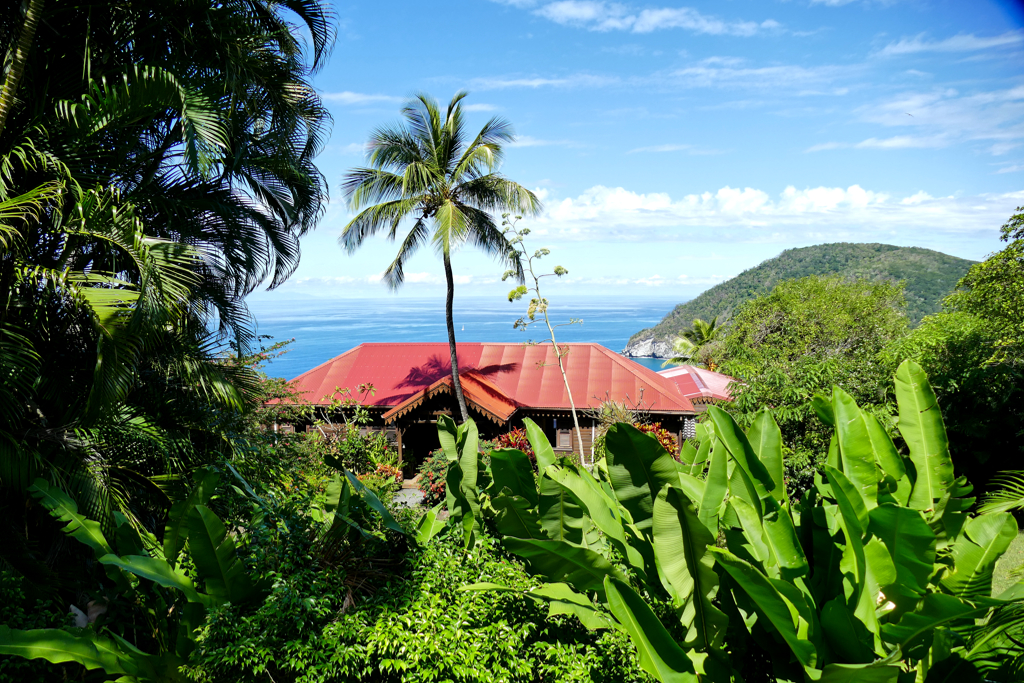
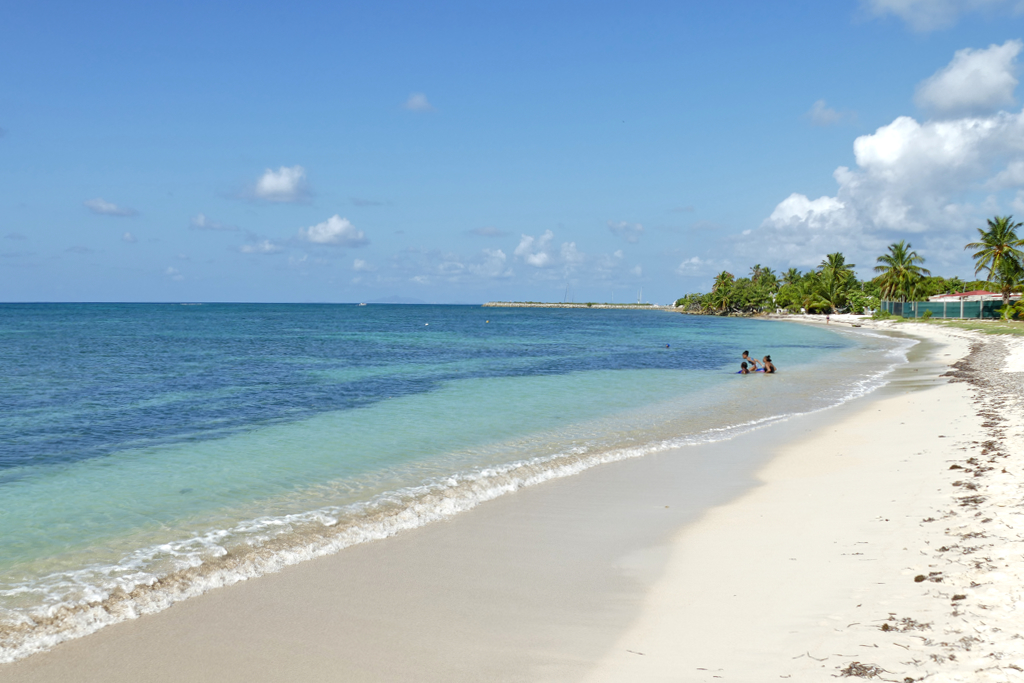
Map
On this map, you can see where all the places listed in the itineraries are located.
Clicking on the slider symbol at the top left or the full-screen icon at the top right will display the whole map. Then, to switch between the two itineraries, just open the legend at the left upper corner and you can hide or unhide the respective layer as you wish. This way, the map will show only the section you really need and be more clear.
Practical Information
It’s quite odd that almost exclusively the French visit the grand Guadeloupe archipelago. Yes, politically and administratively, it is one of their 101 French Départments.
On the other hand, it is exactly this status that makes visiting the island very easy for other nationals as well. After all, you are travelling to France – as simple as that.
Preparations like extending your passport, requesting a visa, or obtaining some strange currency are of no concern when planning a trip to Guadeloupe.
You pay in €uros, and if you happen to be an EU citizen, your ID card is sufficient for entry.
So, what are you waiting for?
Off to Guadeloupe!
How to Get There
Air Travel
Coming from Europe, Asia, and Africa, you’ll probably have a connection in Paris. From Charles de Gaulle Airport in Roissy, Air France flies at least once a day to Fort-de-France. However, note that more flights are going to the French Antilles from the airport in Orly for the sole reason that that’s the hub for domestic flights, and the Antilles are national Départments.
By the way, if your layover is a bit longer, you might want to pay the city center a quick visit. In this case, make sure to check out my post 24 hours in Paris!
From the US, there are direct flights from various cities such as Miami, San Francisco, and Philadelphia.
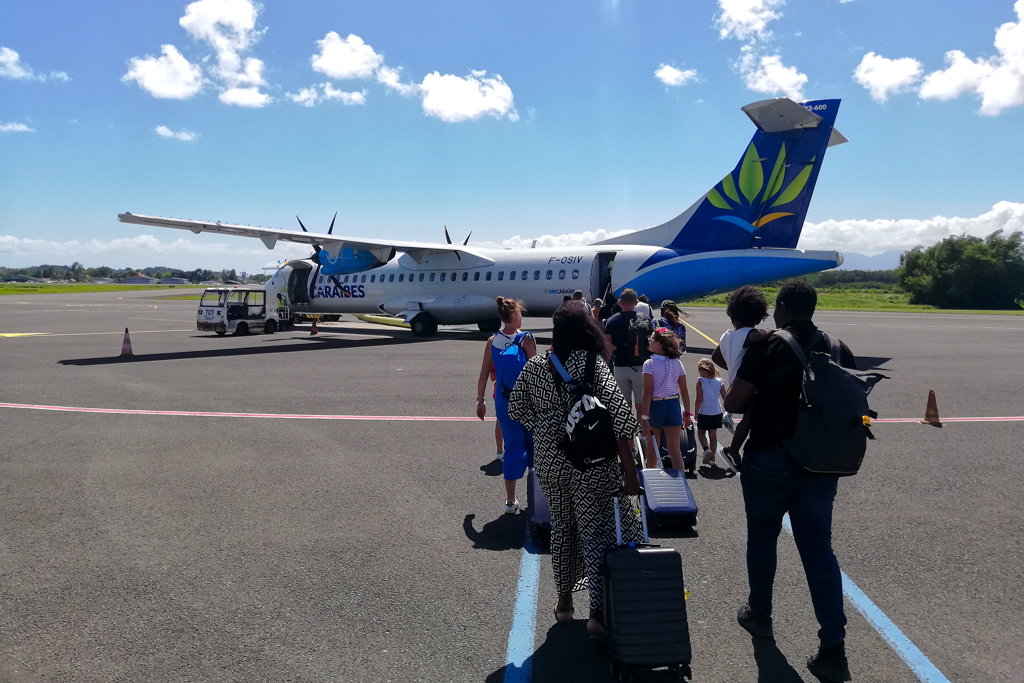
Obviously, you can also fly between the Lesser islands. For instance, Air Caraibes has several daily flights between Guadeloupe and Martinique. They take about 40 minutes and cost around 100 €uros.
Travelling On
The Le Raizet Airport is located a bit over two kilometers northeast of Pointe-à-Pitre in Les Abymes. Most visitors pick up their rental car right at the airport to get to their accommodation. Of course, there are also taxis and private shuttle services. Other than in Martinique, the tariffs aren’t really fixed. The driver will charge you depending on your final destination. A cab from the airport to Pointe a Pitre should cost around 20 €uros, to Le Gosier around 30 €uros, and to Sainte Anne 40 to 50 €uros. However, from 7 p.m. to 6 p.m. cab drivers can legally add up to 40% to their fares. Also, you might have to pay this surcharge on Sundays as there are no public buses.
This brings me to the cheapest option: Public bus lines starting with the letters AE grant bus between the airport and the Le Gosier area. So if you don’t stay in that district, you have to change buses on the way.
Also, this service stops on Saturdays already at 12:30 p.m., and there are no public buses at all on Sundays and holidays. Varying from 1 to 4 €uros, the trip is very cheap, and you can purchase the ticket from the driver. Howsoever, while public buses are a valid option to go on a day trip, I would not recommend them for your trip from or to the airport. Mainly with bulky luggage, it’s really too much hassle. Your comfort should certainly be a priority, especially after you arrive on a long-haul flight.
By the way, you can find more tips for safe and worry-free solo travel in my post How to Surpass Pre-Travel Anxiety.
Sea Travel
If you are already in the Caribbean, in addition to air travel, you can also travel by ferry. The shipping company Express des Iles runs regular ferries between Guadeloupe, Dominica, Martinique, and Saint Lucia. A one-way crossing starts at 59 €uros, and the journey between Guadeloupe and Martinique takes around 4.5 hours. Going to Dominica takes a bit over two hours and to Saint Luce almost seven. However, you can check all prices and connections on the company’s website.
How to Get Around
In general, the bus network in Guadeloupe is pretty well developed. I can’t think of any place that doesn’t have any bus service at all. What makes things a bit confusing at first is that there are two different companies.
Firstly, the company Karu’lis serves the city and district around Pointe-à-Pitre as well as the southern coast of Grand Terre. Their buses are easily recognizable as they are bright orange. You find lines, maps, schedules, and fares online on their website as well as on the Karu’lis App. There you can also charge money and pay for your tickets as you go. Otherwise, you can buy your ticket just as easily from the driver.
Keep in mind that Karu’lis buses stop their service on Saturdays around noon and that there is no service whatsoever on Sundays.
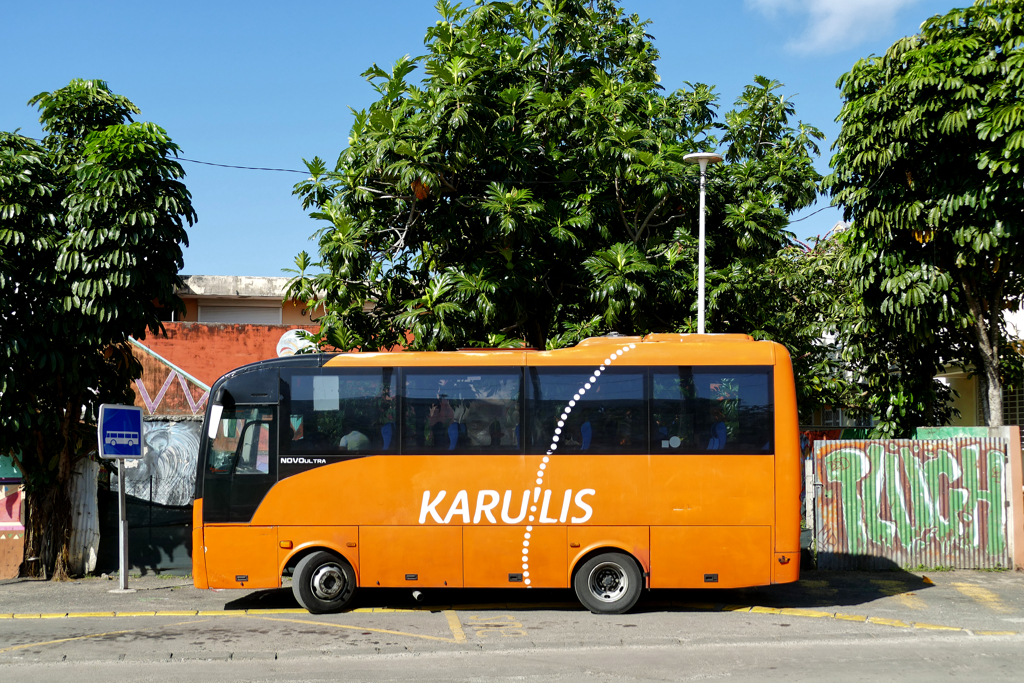
Now, while this sounds really easy and comfortable, I have to inform you that Karu’lis is serving exclusively the above-mentioned part of the island, hence, Pointe-à-Pitre all the way to Pointe des Chateaux.
But what if you want to go to Port Louis or Morne-à-l’Eau? And how about the entire part of Basse Terre?
Well, those are served by a different company. Fortunately, this company also has an excellent website where you find a system map and all timetables as comfortably downloadable PDFs. All you have to do is check on their system map which bus goes where and then look up the times on the respective schedule. Everything is marked in bright colors and sounds probably more complicated than it is.
Do Your Research
While this other bus company is at least as good and reliable as Karu’lis, it has two major flaws: Firstly, there is no App, you have to get all the info from their website. I actually recommend printing out all the schedules before your trip. Don’t worry, there aren’t that many.
The other problem is that they aren’t on Google Maps. So while you can look up the bus from Pointe-à-Pitre to Sainte Anne on Google Maps just like you’d look for a connection in Paris or London, you cannot do that for the other buses. This does not mean they are less reliable, you only have to check all your connections on their website.
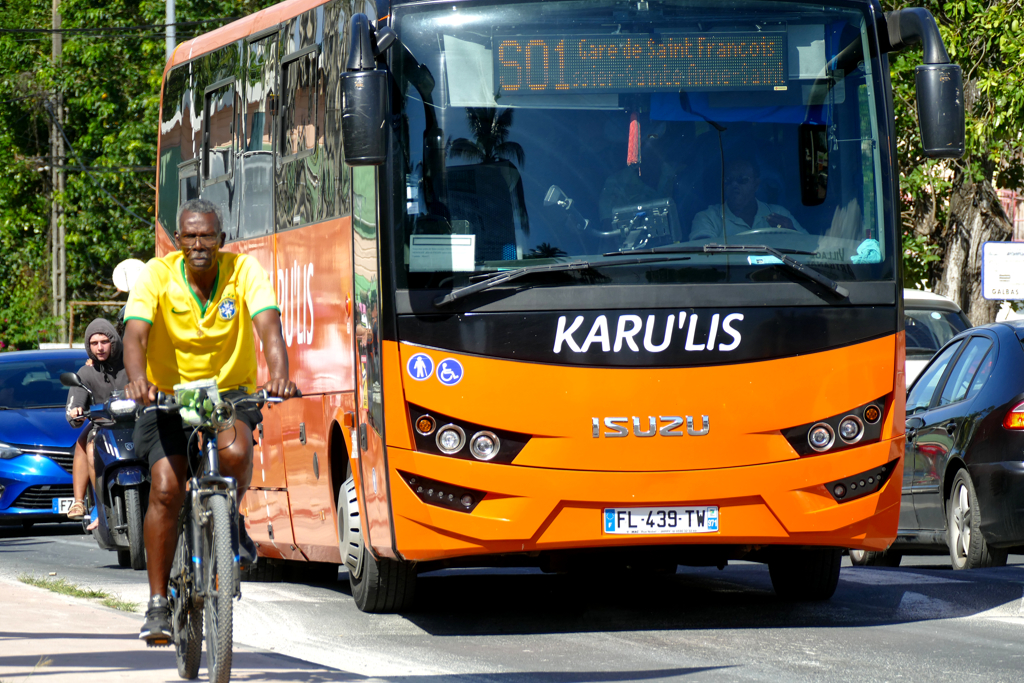
One last but very important thing: To go places that Karu’lis isn’t serving, you basically always have to change buses in Pointe-à-Pitre. There are very few exceptions to this rule. However, it is important to know that Karu’lis’ coaches are going to the Gare De Darboussier east of the port basin while all the other coaches – even those going to the north and the northeast coast of Grand Terre – are leaving from the Gare Routière de Bergevin located close to the cruise terminal. Don’t look for it on Google Maps, they will send you to a roundabout about twenty minutes north of the correct bus terminal. Believe me, been there, done that.
These two bus terminals are about a 20-minute walk from each other, so keep that in mind when planning your trip.
Seven Tips For Exploring Guadeloupe By Public Bus
- The most important tip to make your bus ride more enjoyable: Don’t look at it as a wasted period of time between two meaningful activities. No, think of it as an original tour in an authentic vehicle: Enjoy the amazing scenery, the turquoise waters, the endless sugarcane fields, and the swaying palm trees.
This is neither New York nor Paris nor Tokyo, this is a Caribbean island, and the bus ride is part of the whole experience. - Don’t plan too much for one day. One or two destinations will be enough. Yes, in cities like London or Berlin, you can design a meticulous program for the day and follow through. Taking a day trip on public buses in Guadeloupe is more complex and at times also tiring: you’ll be walking quite a bit and you’ll have to carry all sorts of stuff with you. And all this in the tropical heat. Believe me: Less is definitely more.
- However, plan your trip as thoroughly as possible in advance by checking and downloading the timetables from the Région Guadeloupe’s website as well as Karu’lis’ website and by checking connections on Google Maps or the Karu’lis App wherever possible.
- Be at the stop at least ten, better 20 minutes before the scheduled time as coaches tend to arrive far too early.
- While waiting, don’t get distracted by reading or chatting with others. Keep your eyes on the road if the bus is coming. Because if you just hang around at the bus stop, the driver won’t consider you a potential passenger and might just merrily pass you by. As soon as you see the bus approaching, give the driver a sign by lifting your arm or waving.
- Make sure to have small change to pay your fare as the drivers accept only bills up to 10 €uros.
- Never rely on the last possible connection or the latest scheduled coach. Plan your trip in a way that you can take at least one later bus.
Island Hopping
So you’ve visited some charming estates and some mesmerizing beaches in the two main islands and think you’ve seen it all? No offense, but you are so wrong!
One of the most outstanding activities in Guadeloupe is leaving the main isles behind and sailing to new shores. Don’t forget: Guadeloupe is not just an island, it’s an entire archipelago!
Just like their big sisters, the small isles are awaiting you with historic places, pristine beaches, amazing sceneries, and high-quality Rhum Agricole.

You can join a pre-organized day trip, but you can also easily arrange your excursion yourself.
To visit Marie Galante or La Désirade, you need to board either in Pointe-à-Pitre or in Saint François. The latter port is more convenient if you are coming from the central or the eastern part of Grand Terre. Note that the ferries take you to different ports of Marie Galante: coming from Pointe-à-Pitre, you’ll arrive in Grand Bourg while the ferry from Saint François takes you to Saint Louis.
Depending on the port of embarkation, the day, and the company, tickets start at 29 €uros, but usually they are around 45 to 50 €uros. These rates are for a roundtrip and include luggage up to 25 kilos.
If you’re planning on visiting two of the smaller islands, you can buy a combined ticket for 60 to 70 €uros.

For Marie Galante, you can usually add an island tour package that includes visits to the most important sights, lunch, and the afternoon on a beach. Although there is a limited bus service on the island, I would recommend booking this complete package, especially given the limited length of your stay.
To visit Îles des Saintes, however, you need to go to the port of Trois Rivières on the southern coast of Basse Terre. These roundtrips cost around 25 €uros.
Organized Trips
As I pointed out, most of Guadeloupe’s wonderful places can be reached by public bus. However, this will cost you some time and possibly a lot of nerves. Hence, an organized tour might be a more suitable option, especially if you don’t have much time on the island.
Also, if you want to visit the smaller islands, and engage in activities on the water like sailing or snorkeling from a boat, you have to go on a tour unless you bring your own yacht. Therefore, here are some great tours to choose from*:
Where to Stay
All things considered, your lodging choice should primaliry depend on what you are planning on doing. Also, you are obviously more flexible if you’re renting a car which I didn’t.
If you are planning on spending most of the time on Guadeloupe’s marvelous beaches, you’ll probably opt for a town with a Plage du Bourg, a city beach. There are dreamy beaches on Grand Terre as well as on Basse Terre, albeit, those on the latter one are more difficult to reach be public bus. Since I definitely recommend to explore both parts of the island, it can be more convenient to choose your accommodation accordingly, hence, to stay a couple of days in Grand Terre and then move to Basse Terre.
Wherever I Lay My Hat
As for me, I explored Guadeloupe exclusively by public transport, and yet, I was based during my entire stay of 16 days exclusively in Grand Terre only because I really didn’t feel like hauling my stuff across the island in the heat. But yes, this way, I spent hours on buses. Actually, I didn’t mind since a bus ride is basically a sightseeing trip only without extended explanations. Nevertheless, by no means did I regret my choice as my spacious apartment Chez Janou was located on top of a small hill so that I had an amazing view from my large balcony. Also, it was a five-minute walk from the beautiful beach of Sainte Anne.
Yes, I rented an apartment and so do many visitors. There are hotels mostly in the area around Le Gosier, and there is a Club Méditerranée on the outskirts of Sainte Anne. However, lodging options can get quite pricey, and you’ll spend probably only a couple of hours at night in your room, anyway. Also, dining out is not exactly cheap on the island so preparing your own meals at least from time to time will save you some money.

At the end of the day, it totally depends on your preferences and your budget if you choose a luxurious room at a fancy resort or if you go for a cozy apartment rented out by a local. Either way, you can check out the availability and prices of various lodging options around Guadeloupe on this map*:
What to Eat
Caribbean cuisine combines the culinary traditions of all the peoples who have lived in the region. That sounds like a pleasant mix of cultures, but we all know how this often involuntary migration came about. Whatever the case, Creole cuisine is a vibrant mix of African, French, and Asian dishes. It combines lots of spices and different flavors.
Guadeloupeans, however, seem to be very much into snacks’n’starters. The most famous dish is actually a fried sandwich stuffed with whatever your heart’n’stomach desires. The second favorite one is Agoulou. It is a quite large brioche bread filled with a wide variety of fillings.
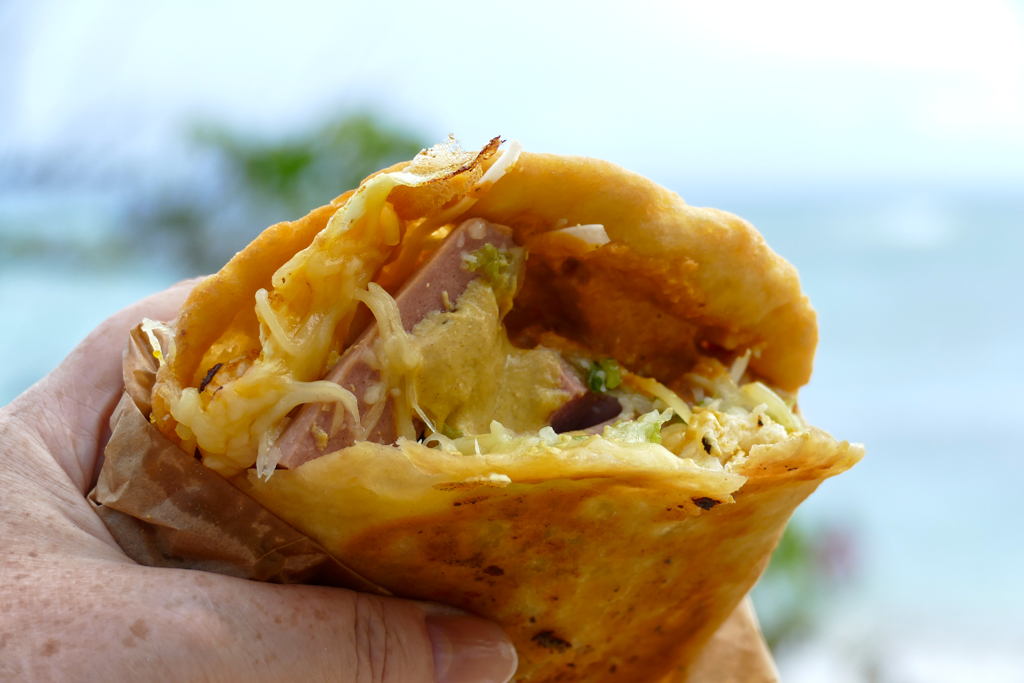
A must-try starter is Accras, small fritters with cod, shrimp, or vegetables. You know that the cook knows his trade when they are crispy on the outside, yet inside still soft and creamy. Other popular starters are stuffed crabs and boudin, a local sausage. There are various kinds like the one made of bacon and pig’s blood or an even more exotic one made from seafood. Many restaurants offer varied starters in one platter to try.

Now let’s continue with the most iconic main courses. Obviously, there is lots of fish and seafood, we are talking about an island, after all. But the traditional cuisine also includes meats, mostly chicken. It can be grilled on charcoal in cut-open barrels or smothered in a spicy curry sauce called Colombo, to name just two variations.
Quick Snacks
Obviously, you can eat at many classic restaurants. However, don’t underestimate the many fast food eateries and Rôtisseries that you’ll find in towns’n’villages. Albeit, the term fast food is misleading since these snack bars cook their delicacies actually with lots of love and time before they keep them hot on a counter so you can grab a quick lunch. A downside might be that you can enjoy these delicious meals solely at lunchtime.
One good thing about French influence is the countless bakeries that you find in every town and even the smallest village. Baguette, croissants, pain au chocolat, chausson aux pomme that literally melt in your mouth. Yes, just like in France. There are also quiches, puff pastries filled with minced meat, and juicy sandwiches. In any case, your snack for the beach day is ready and waiting for you at your local boulangerie!
Finally, don’t forget to stock up on fresh fruits. You’ll be amazed how much better they taste if they just fell from a tree instead of travelling thousands of miles to your local supermarket!
Also, there is hardly a tastier and healthier way to beat the Caribbean heat than to quench your thirst with a delicious freshly squeezed juice or pureed smoothie.

However, a mixer without rum is unimaginable in Guadeloupe. However, you should at least try the artisan rhum agricole pure. Those of average quality go into cocktails and longdrinks like the regional Ti’punch. That’s a very tasty mix of lemon, rum, and sugar.
Cash And Cards
Since 2001, 20 European countries have paid with €uros, and France is one of them, obviously. As Guadeloupe is one of the country’s so-called Départments Outre-Mer, their official currency is as well €uros whose exchange rate is 1 US$ = 0,85 EUR as of May 2025. However, you can check the conversion on this page.
Also, you can pay with credit cards even the smallest amount basically everywhere. Nevertheless, if in need of cash, you’ll find ATMs in many places.
Guadeloupe is not a cheap island. As a matter of fact, your costs strongly depend on your travel style. You can spend small fortunes on accommodation, food, and drinks. However, you also have the option to rent a pleasant apartment, cook most of your meals there, and go places by public bus. This way, you won’t spend more than on any other trip.
Language
Obviously, French is the official language and all locals speak it perfectly. Nevertheless, Guadeloupeans speak Creole among themselves. It is a French-based language, with vocabulary and grammar also incorporating elements of English and African languages. If you speak French very well, you will understand some things, but probably not everything.
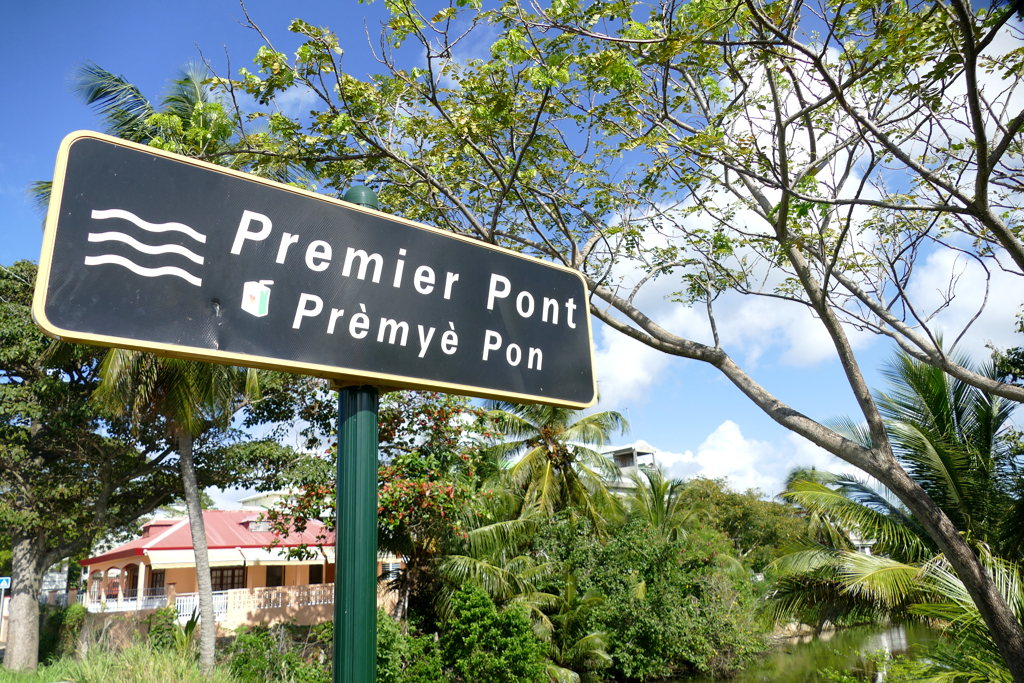
Now, the French are famous for many great things. Presumably, speaking foreign languages is not one of those. Sadly, this seems to have rubbed off on the islanders. Most locals understand no English at all or speak it poorly and with a charming but incomprehensible accent. Unbelievable when I remember that in the Dutch Antilles Aruba, Bonaire, and Curaçao, almost everyone was fluent in not two, not three, no, four languages!
However, landmarks and museums usually also have introductions in English. Still, don’t expect to get very far without halfway decent French. Hence, if you don’t speak the language, you should download a good translation app. Of course, it’s also nice to learn common polite phrases that you can pick up on babbel or Lingohut, for example.
Extra Tip:
Make sure to start every conversation with Bonjour. Every single one without exception. No excusez-moi, no, first a bonjour, then the apology, then your question. But don’t worry: If you forget it, the addressee will remind you – and be it by raising an eyebrow.
Connection and Communication
One of the perks of Guadeloupe being actually part of Europe is the connectivity. Since June 2017, no roaming charges have applied within the EU with a European mobile phone contract. Therefore, roaming is available just like in the so-called Métropole or Hexagone, hence, in France.
If you don’t have a European phone contract, you can still connect to the internet without any issue at many places like eateries, cafés, and, of course, hotels. If you insist on being online 24/7, you can get a SIM card, obviously. There are prepaid SIM cards by many companies. The cheapest one is distributed by Orange France, other brands are for instance Digicel and RED Caraïbe. However, keep in mind that some companies might also charge an activation fee.
In France, they use plug types C and E. Their voltage is 230 V and the frequency 50 Hz. Whereby, as nowadays, all these chargers have integrated adapters, in general, the voltage and frequency don’t really matter.
By the way, you’ll find this information and many more comprehensive travel tips in my post World’s Most Complete Travel Information – an indispensable globetrotter-classic.
For stories and information on other parts of Guadeloupe, check out my posts
The Best Beaches in Guadeloupe You Can Easily Visit by Public Bus
Best Street Art in GUADELOUPE
Guadeloupe: What Not to Miss on a Visit to the Island of Marie Galante
Best Places to Visit in Basse Terre, the Western Wing of GUADELOUPE (also by public bus)
Best Places to Visit in Grand Terre, the Eastern Wing of GUADELOUPE (also by public bus)
Pinnable Pictures
If you choose to pin this post for later, please use one of these pictures:
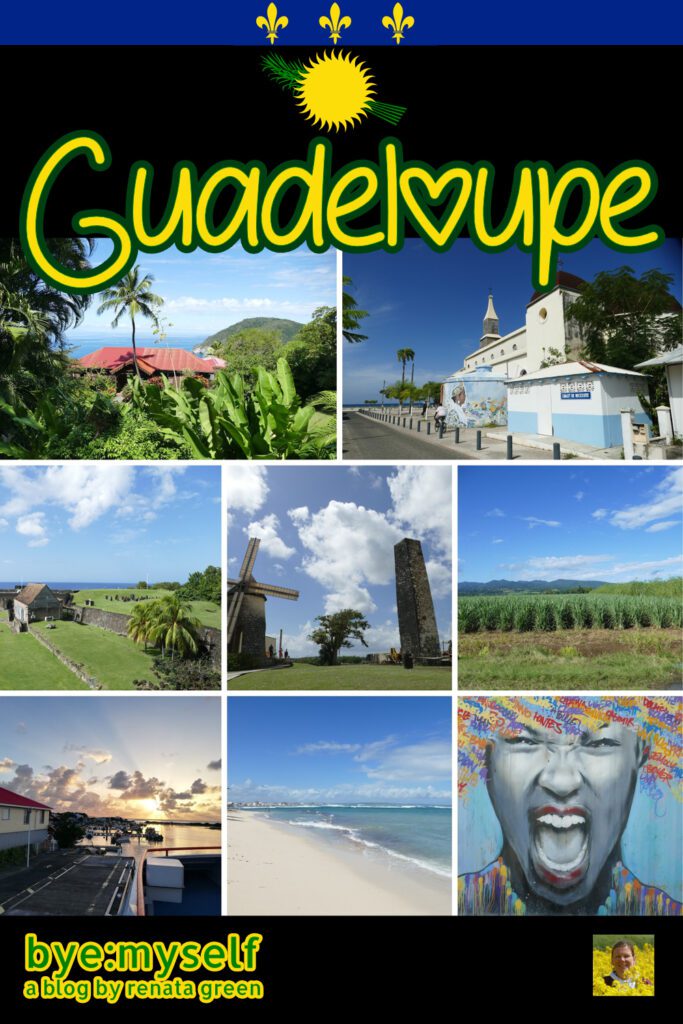
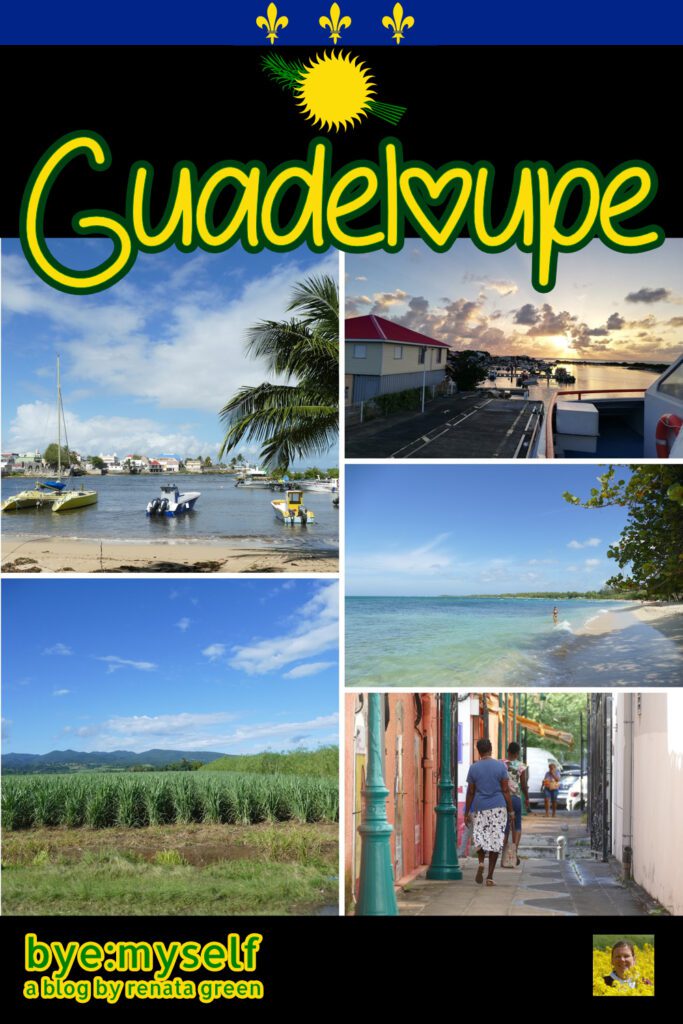
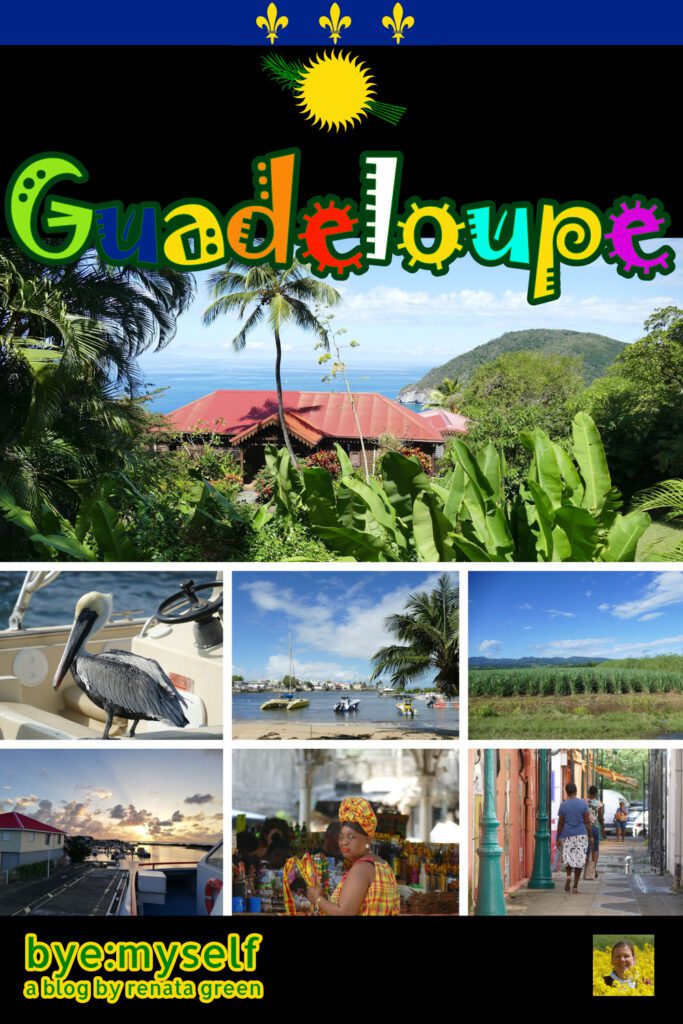
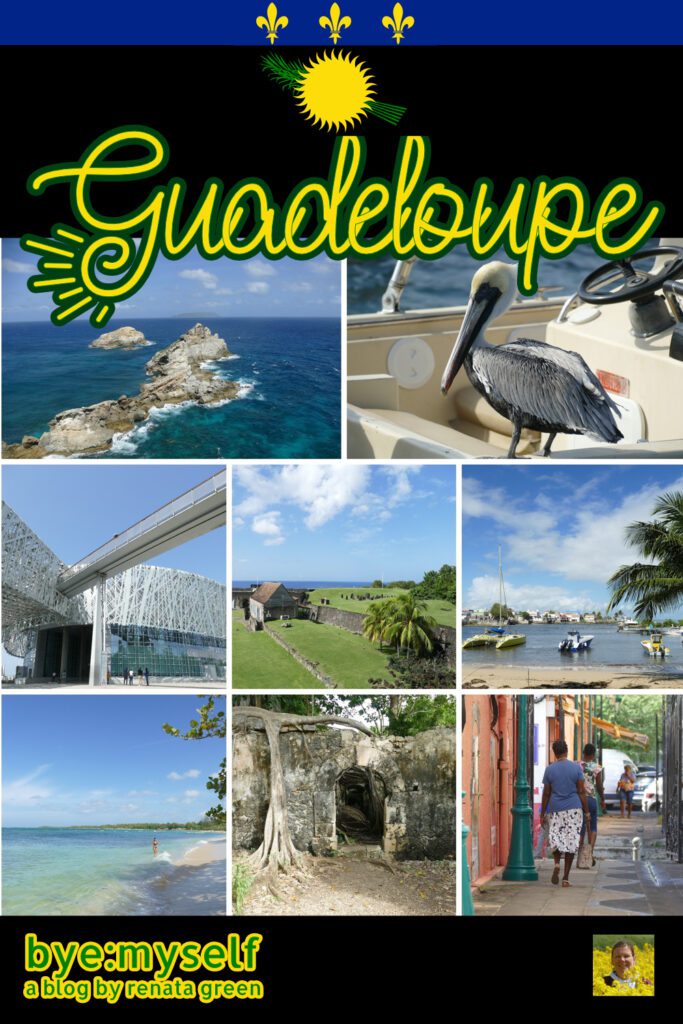

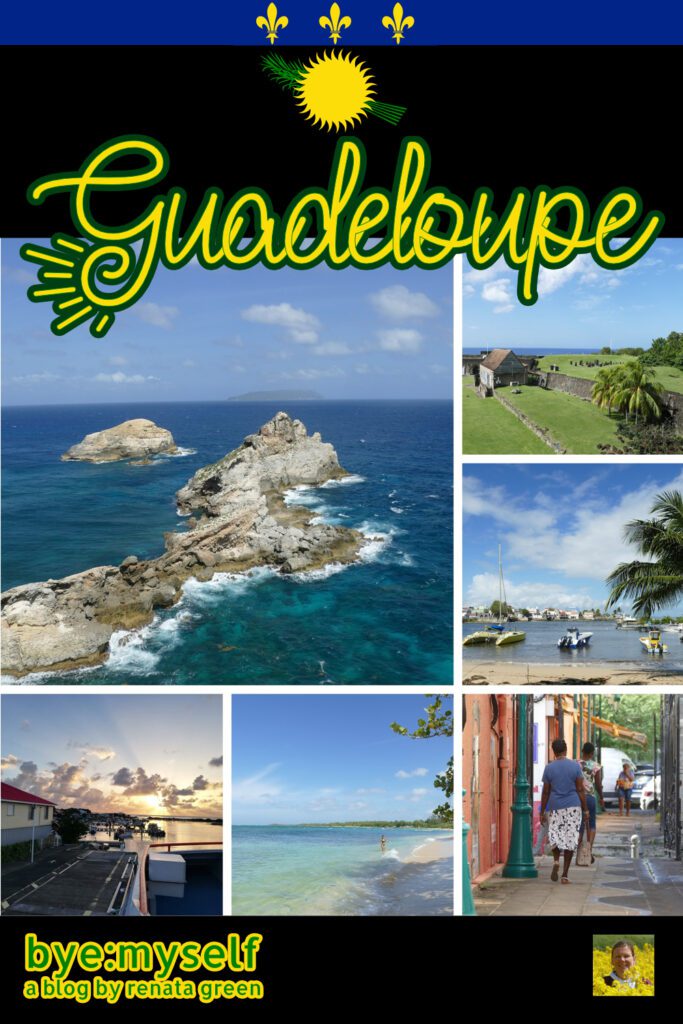
Note: I’ve thoroughly completed, edited, and updated this post in May 2025.
Did You Enjoy This Post? Then You Might Like Also These:
Typically Tropical: Best Places Not to Miss on the Amazing Island of BARBADOS
Guide to BARACOA – Cuba’s Hidden Gem
The Best Beaches in Martinique You Can Easily Visit by Public Bus
Two Days in CARTAGENA
Guide to CAMAGUEY – Cuba’s Modest Beauty
What Not to Miss in BRIDGETOWN, Barbados’ Exciting Capital
CUBA – the Complete Guide from Coast to Coast
BONAIRE Totally Unexpected: Street Food And Urban Art Tour
* This is an affiliate link. If you book through this page, not only do you get the best deal. I also get a small commission that helps me run this blog. Thank you so much for supporting me!
